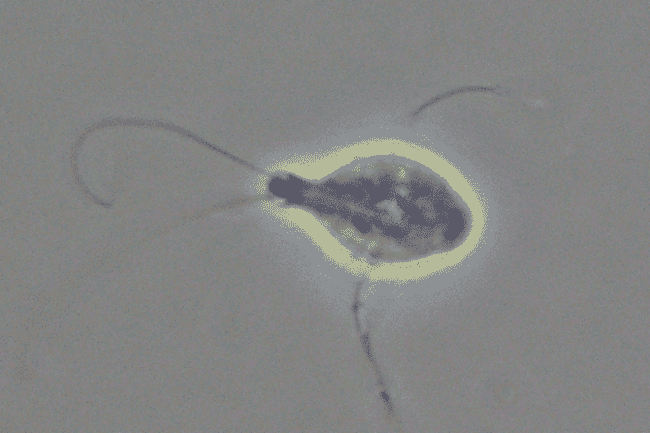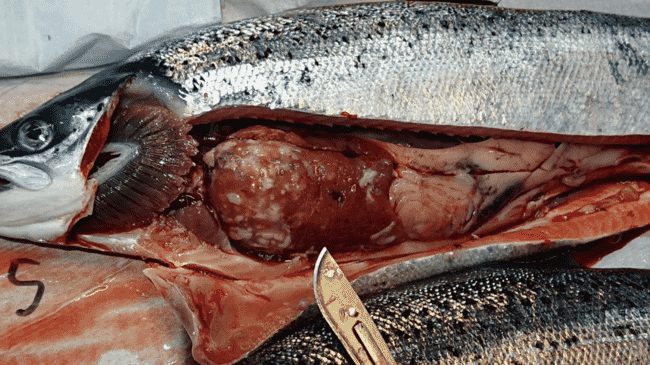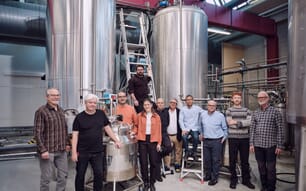
Spironucleus are single-celled microparasites that are commonly found in the intestine of fish. The parasite causes concern for salmon farmers in northern Norway. © Hanne Brenne, Nofima
The parasite that causes systemic spironucleosis in salmon has been detected on farming sites in Norther Norway – with a recent outbreak being recorded in 2022.
Spironucleosis can cause mortality in fish but can also have a detrimental effect on the quality of the fish, resulting in large quantities being discarded upon slaughter. To prevent the spread of the parasite, it has often been necessary to slaughter all infected fish populations, which makes the parasite a major threat to the aquaculture industry.
Millions in funding from FHF
In 2022, both the parasite and the disease were detected in several fish farms in Northern Norway. The parasite was also detected for the first time in a smolt production facility. Researchers have noted an increase in the number of infected fish, saying that it is possible that the parasite is spreading between neighbouring net pens at sea.
“The aim of the SpiroFri project is to gain increased knowledge about the parasite so that the industry can prevent the pathogen from entering and spreading in smolt production facilities, and therefore prevent it from appearing in farmed fish that have been transferred to the sea,” says project manager and research director Bjørn Olav Kvamme at the Institute of Marine Research.
The project has received NOK 7 million (approximately $666,000) in support from the Norwegian Seafood Research Fund, with a total budget of NOK 8.9 million (approximately $847,000). It is a collaborative project between the Institute of Marine Research, Nofima, the Norwegian Veterinary Institute, Pure Salmon Kaldnes and Grieg Seafood. The project will run from January 2023 to December 2024.
Parasites living in the intestine
Several species of Spironucleus can be found in Norwegian salmonids, and these tiny, single-celled organisms normally live in the intestine.
“The special thing about this parasite is that it leaves the intestine where it typically resides, and enters the bloodstream,” says Egil Karlsbakk, research scientist at the Institute of Marine Research, adding:
“No one knows why and how it penetrates the intestinal wall. When it enters the bloodstream, it can spread to all parts of the fish, which is why we say the infection is systemic. It can enter the brain and form abscesses in the internal organs and the muscle.”
Infection trials at the Institute of Marine Research
Karlsbakk leads the infection trials that will be carried out at IMR. Salmon, sea trout, Arctic char and lumpfish will all be part of the research project. A pilot infection trial led by Nofima has already been carried out with salmon in seawater at the Aquaculture Research Station in Tromsø.
At IMR, marine scientists will investigate the role these fish species play in the spread of infection, and if infection from fish farming facilities can have a detrimental effect on those species as well.

Abscesses (granulomas) are formed in musculature and internal organs in infected fish, shown here in the liver. © Roy-Inge Hansen, Nofima
“It turns out that lumpfish used as cleaner fish in the net pens have been infected, which is new information – ie the fact that the parasite can also infect fish that are not salmonids. We are therefore concerned that it can also spread to other species,” says Karlsbakk and adds:
“Our trials are currently focused on how to infect the fish.”
Report anticipated this summer
The new project is divided into three work packages: a review of current findings and data on the parasite; investigations of biosecurity measures and consequences of infection in hatcheries and infection trials that investigate possible routes of infection among the fish.
“There is an urgent need for more knowledge about this parasite and its relatives, so we expect to have the first knowledge summary in Norwegian as early as this summer,” says Karlsbakk, adding:
“When it is ready, we will start our own infection trials here in Bergen. The scientists at Nofima in Tromsø will look at possible means to disinfect the intake water so that the parasite does not enter or spread in the smolt facility.
“The parasite has been detected in wild salmonids living in freshwater that is used as a water source for hatcheries, which therefore represents a potential source of infection that we must try to control,” says Lill-Heidi Johansen, scientist and project manager at Nofima.
The results from the project will be key to preventing and dealing with problems and losses caused by the parasite, as well as preventing the spread of infection.
“There is still much we do not know about the parasite, and it is a very good thing that FHF were able to provide funding for this research so quickly,” says Kvamme, adding:
“We are also very pleased that important research institutions and industry partners are collaborating on this project. Both industry stakeholders and support from public administration will contribute to developing evidence-based interventions to tackle this challenge.”




